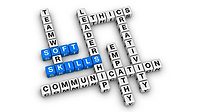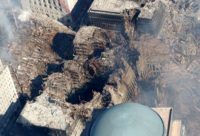Security Talk
Keep the conversation going




When I first entered the security industry, it was in the early 2000s. There was no social media, no iPhones, no podcasts. My first security tradeshow happened to be ISC West. Not only was I overwhelmed by the technology and the learning curve of understanding organizational and enterprise-level risks, mitigation and solutions, but I was struck by the sheer size of the show. The number of booths, the size of the space, the number of people, and the energy of it all has stayed with me through the years.
I learned many things that week, not the least of which is the importance of sensible shoes. Though technology in magazine publishing and in the security industry has transformed and, in many cases, is completely different than 15 years ago, one thing that hasn’t changed is the energy of those in this industry and their willingness to share.
Over the years I have had the opportunity to meet and speak with many executives, installers, business owners, and other security professionals to learn about their biggest pain points, biggest risks, best practices and solutions, and the evolution of their careers within security. In my experience, the number of thought leaders in this space and those willing to share their security journeys and tips with peers, what worked and what didn’t work, makes this industry truly unique.
Risks may have changed over the years, solutions and best practices have transformed and evolved too, but not that willingness to learn from one another. There seems to be an understanding that the world, its organizations and its people get safer when we can share best practices, ideas and solutions with one another.
I think a case can be made that there is value in sharing our feelings too. Many reports in recent years have cited the increasingly high stressors and stress levels of chief security officers (CSOs) and security professionals. A report from Nominet earlier this year said that the average tenure for a chief information security officer (CISO) and CSO is 26-months before finding new employment. In addition, the 2020 State of SecOps and Automation Report found that 86% of respondents were concerned about burnout and high levels of stress among security teams, due to the daily volume of alerts. Furthermore, a recent study by Sleep Standards showed that more than 50% of survey respondents are experiencing anxiety and stress over the presidential election this year, recent political events, social unrest and the COVID-19 pandemic. Add those stressors to a security professional’s ongoing job stressors, and it’s no wonder I have heard from many of you about burnout, poor mental health and high turnover within the industry. The stressors can’t necessarily be removed completely, but planning, talking and sharing may help.
I know that many of the risks you face and mitigate and the roles you take on day-to-day may, at some point, turn out to be an incident that’s the worst day of your life, or one of the worst. Our goal is to cover content and facilitate conversation in a way that makes your job quiet for that day.
I look forward to providing you with content, in these rapidly changing times, that will help you sleep a bit better, help you prepare a bit better and, hopefully, help your day be a bit quieter.
I’d love to hear from you personally about your thoughts, your ideas, and your biggest stressors (email me at sheinm@bnpmedia.com), and I encourage you to talk and connect with your colleagues and peers about those things too. Because let’s face it, things are stressful; there is value in sharing and talking. Let’s keep the conversation going.
Looking for a reprint of this article?
From high-res PDFs to custom plaques, order your copy today!








